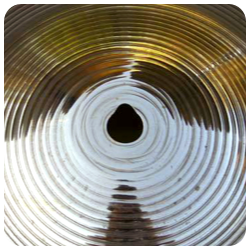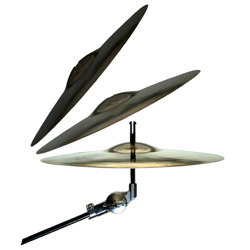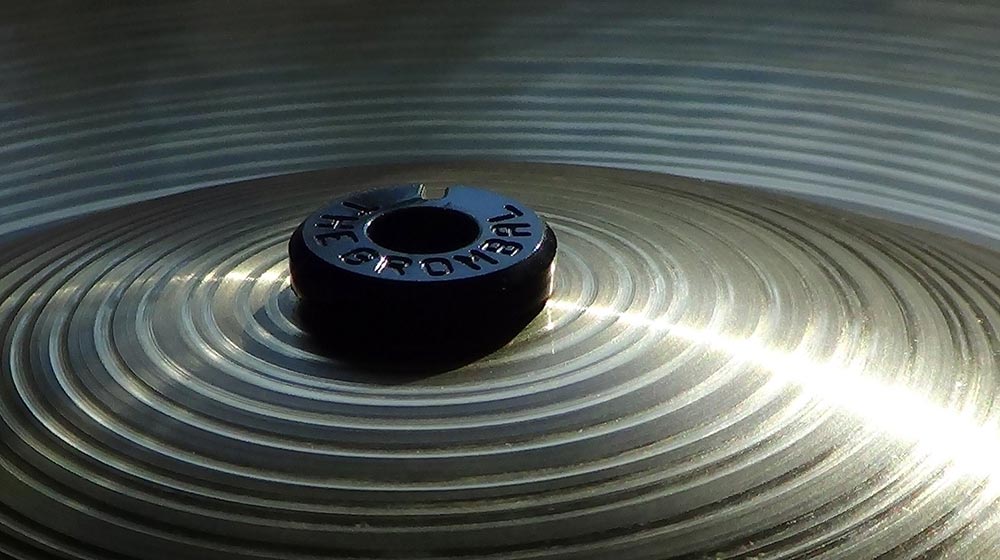Cymbal keyholes explained – and how to avoid them

Question: Some people talk about a cymbal having a keyhole, or cymbal keyholing. What does this mean?
What Is a Keyhole in a Cymbal?
The term "keyhole" is derived from the English word "keyhole." It refers to the distinctive shape that the hole in a cymbal can take on when it has been used over time without proper mounting and adjustment.
How Does a Keyhole Form?
The primary reason a cymbal develops a "keyhole" is often due to the lack of adequate protection around the mounting hole. When you initially purchase a new cymbal stand, it typically comes equipped with plastic or rubber inserts that prevent direct metal-to-metal contact between the cymbal and the stand. Unfortunately, this protection wears down over time, and if it's not replaced, the wear and tear can accelerate significantly.
Another factor contributing to keyholing is the uneven weight distribution of cymbals. Due to this imbalance (read more about this phenomenon here), a cymbal tends to settle into a consistent resting position over time – for example, you may notice that the logo always faces the same direction when you play. This repetitive contact at one specific point on the cymbal bell leads to wear around the hole, resulting in the formation of a keyhole. As the cymbal stand gradually erodes the metal, a new hole forms adjacent to the original one, creating a shape resembling a keyhole, hence the name "keyholing."
How Can I Prevent Keyholing in My Cymbals?

It's essential to regularly inspect the protective components on your cymbal stand. If it appears that metal-on-metal contact is imminent, replace the protective elements immediately. Some cymbal stands feature plastic castings with threads; if these are worn down, they must be replaced.
Cheaper or older stands often use a material similar to moped petrol hoses for protection. These are inexpensive to replace, so it's wise not to overlook this. Consider purchasing extra lengths to keep as spares for easier future maintenance.
Alternatively, you can replace all parts of your cymbal stand with a No Nuts Cymbal Sleeve. Made of solid plastic where the cymbal contacts the stand, a No Nuts Cymbal Sleeve is highly durable and resistant to wear. Even if one wears down, there's no metal beneath the plastic, so your cymbal remains protected.
🛡️ Keyholes? Prevent them – or stop them from getting worse
To prevent cymbal keyholes, try No Nuts sleeves – a smart alternative to felts and washers that keeps your cymbal centered and protected.
Already have a keyhole? Use The Grombal to stabilize the cymbal and prevent further damage – it fits most stands and makes mounting easy.
What do I do when the damage is done?
Once a keyhole has formed, it cannot be removed, but you can prevent it from worsening. You'll need to acquire what's known as a "Grombal Cymbal Keyhole Protector," which is permanently installed in the cymbal's hole. Made of soft rubber, the Grombal not only protects the existing keyhole but also prevents the formation of new ones on a new cymbal.
Additionally, a Grombal allows your cymbal to be mounted on a stand without the need for holders, felts, or similar accessories. Whether you're taking your cymbals to jam sessions or other venues where the stands may not always be in optimal condition, a Grombal provides both secure mounting and peace of mind.
Protecting Your Cymbals: Tips and Solutions
Cymbals are essential components of any drum kit, but they are prone to damage, especially keyholing, which can affect their performance and longevity. By implementing preventive measures and using protective solutions, you can keep your cymbals in top condition for longer. Here are some tips to help you prevent and protect your cymbals from keyholing:
Preventive Measures
- Regularly inspect the protective components on your cymbal stand.
- Replace protective elements immediately if metal-on-metal contact is imminent.
- Consider purchasing extra lengths of protective materials for future maintenance.
- Alternatively, replace all parts of your cymbal stand with a No Nuts Cymbal Sleeve, which is highly durable and resistant to wear.
Protection After Damage
- Once a keyhole has formed, it cannot be removed.
- To prevent further damage, use a "Grombal Cymbal Keyhole Protector," permanently installed in the cymbal's hole.
- The Grombal, made of soft rubber, protects existing keyholes and prevents the formation of new ones on a new cymbal.
- Additionally, a Grombal allows secure mounting of cymbals on stands without the need for holders, felts, or similar accessories.
✅ Read more about The Grombal here.

